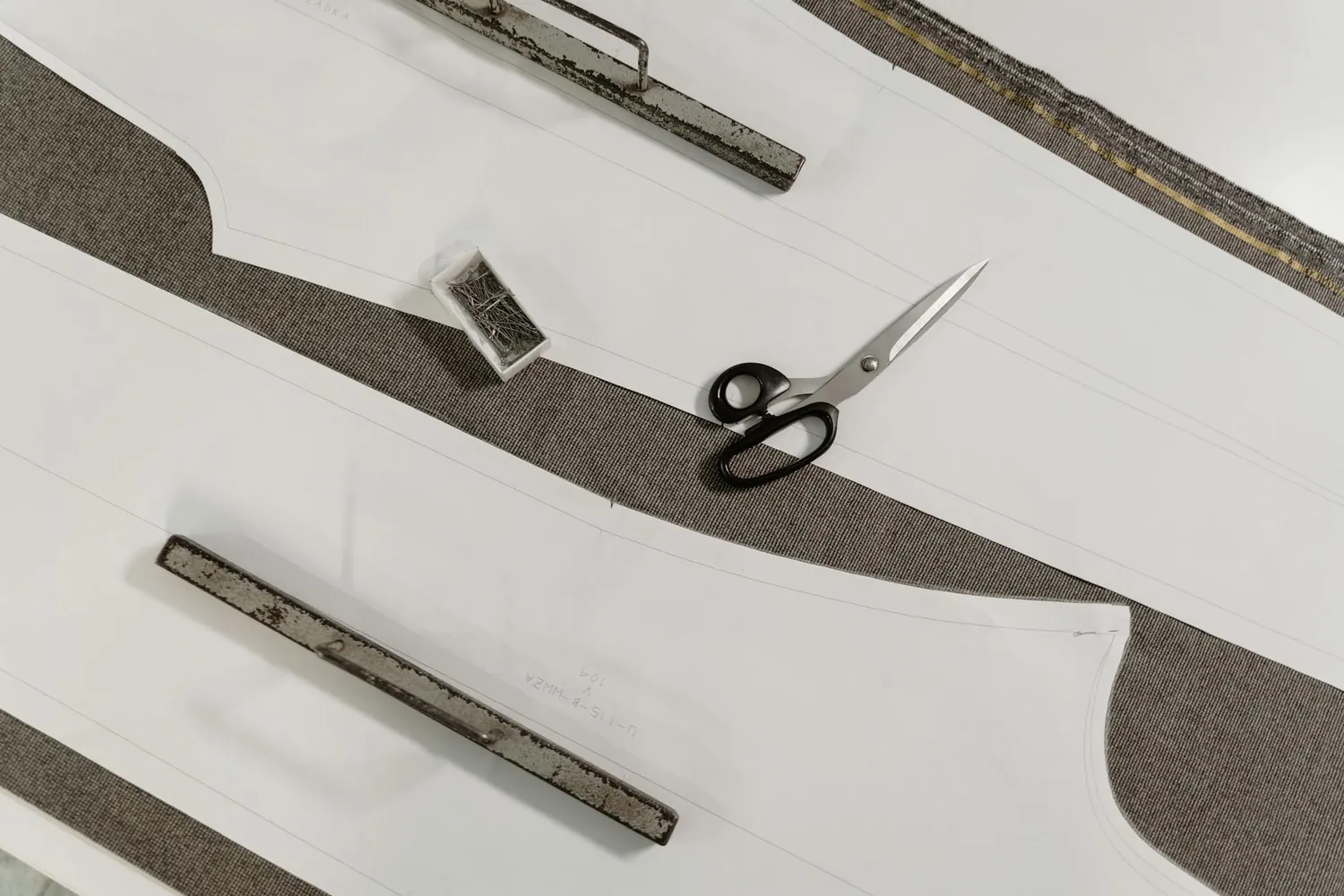From Sketch to Suit: The Art and Science of Tailoring

The Journey Begins with a Sketch
In the world of bespoke tailoring, every suit begins its journey as an idea on paper. This initial sketch is more than just a rough outline; it embodies the client's vision and sets the stage for what will eventually become a unique piece of wearable art. A bespoke suit is not merely clothing; it's a statement of personal style, a testament to tradition, and a collaboration between the tailor and the client.
Consider the case of Alexander, a young entrepreneur from London who wanted a suit that reflected his modern sensibilities yet paid homage to classic English tailoring. He approached Savile Row’s renowned tailor, Henry Poole & Co., with his ideas. The first step was a detailed consultation where Alexander expressed his preferences for fit, fabric, and features. From there, the tailor sketched several designs, incorporating elements like peaked lapels and high-waisted trousers, which resonated with Alexander’s vision.
Selecting the Perfect Fabric
Fabric selection is crucial in bespoke tailoring. It influences not only the suit's aesthetic but also its comfort and longevity. Tailors often source from elite fabric mills in Italy and England, known for producing luxurious wools, cashmeres, and silks. For instance, a fabric like Super 150s wool is popular for its balance between durability and softness, making it ideal for both everyday wear and special occasions.
For Alexander's suit, a deep navy herringbone fabric was selected from Loro Piana, celebrated for its fine Italian craftsmanship. The choice was strategic; the herringbone pattern added texture and depth to the suit while maintaining versatility suitable for various settings, from boardroom meetings to evening events.
Measurements: Precision and Personalization
The measuring process in bespoke tailoring is an art form in itself, often requiring over 30 precise measurements to ensure the perfect fit. Unlike ready-to-wear or made-to-measure garments, bespoke suits accommodate every nuance of an individual's body shape and posture.
During this phase, tailors might even consider how a person stands or moves. In Alexander's case, his slightly forward shoulder posture was noted by his tailor. To address this, adjustments were made to ensure the jacket draped elegantly without creasing or pulling.
The Craftsmanship Behind Every Stitch
The transition from sketch to fabric involves meticulous crafting. Each piece of fabric is hand-cut with precision—an essential step that respects the grain and ensures the suit’s proportions are in harmony with the wearer’s physique.
Savile Row tailors, like those at Henry Poole & Co., are renowned for their hand-sewn buttonholes and extensive canvas structuring. Unlike fused suits where adhesive is used to bind layers together, bespoke suits use a floating canvas that adapts to the body's contours over time, providing unparalleled comfort and shape retention.
Traditional Techniques Meet Modern Innovations
While traditional techniques form the backbone of bespoke tailoring, modern innovations enhance the process. Techniques such as laser cutting ensure precision without sacrificing craftsmanship. Digital fittings using 3D imaging technology provide insights into how fabrics behave on different body types before the first cut is made.
Even with these technological advances, bespoke tailoring remains a deeply personal craft. Consider David Gandy’s experience at Huntsman on Savile Row, where each fitting involved discussions about subtle changes and additions that would enhance both aesthetics and comfort—showcasing that even with technology, human insight remains irreplaceable.
The Fittings: Iterative Perfection
A bespoke suit requires multiple fittings—usually three or more—to achieve perfection. During these sessions, tailors make necessary adjustments based on how the suit sits on the body. It's a dynamic process where feedback from both client and tailor plays a pivotal role.
For Alexander's second fitting, slight tweaks were made to the jacket length and sleeve pitch after he mentioned his desire for ease of movement. The third fitting focused on fine-tuning, ensuring every line was immaculate and every seam flawless—a hallmark of luxury tailoring.
The Finishing Touches
The finishing touches are where individuality shines through. Options like monogramming add personal flair; button choices can signal style preferences (horn buttons for traditionalists or mother-of-pearl for those inclined towards opulence). Linings offer another avenue for expression—ranging from solid silks to patterned masterpieces that remain hidden until revealed by a playful flick of a jacket.
Alexander chose a contrasting burgundy paisley lining for his suit—a nod to his vibrant personality that added depth without overshadowing the garment's classic exterior.
Caring for Your Bespoke Suit
Luxury garments require proper care to maintain their allure over time. Experts recommend airing out suits after wear and storing them on wooden hangers to preserve their shape. Regular brushing with a natural-bristle brush can remove dirt particles that may damage fibers over time.
Periodic visits to your tailor for minor adjustments or repairs ensure longevity. Just as one nurtures fine leather shoes with polish and conditioning, so too does a bespoke suit benefit from attentive care.
Conclusion: A Legacy of Craftsmanship
The journey from sketch to suit is not merely about creating clothing; it’s about crafting an experience that celebrates tradition and innovation in equal measure. Bespoke tailoring offers clients something unique—a garment that tells their story while exemplifying artisanal excellence.
Whether it's through fabric selection, measurement precision, or finishing details, each element reflects a commitment to quality that transcends fashion cycles. For those like Alexander who invest in such timeless pieces, their bespoke suits become cherished parts of their wardrobe—and indeed their legacy—imbued with stories of craftsmanship and personal expression.
 BuzzArticle
BuzzArticle